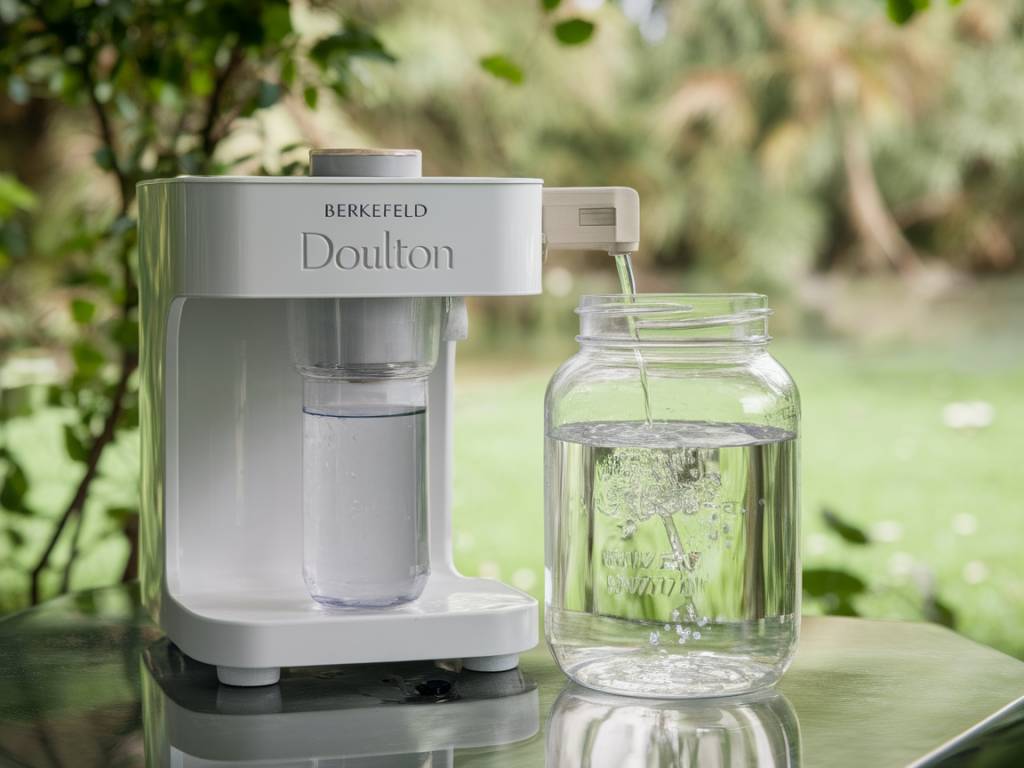Understanding PFAS: The Invisible Threat in Our Drinking Water
They’ve been called « forever chemicals »—and for good reason. PFAS, or per- and polyfluoroalkyl substances, are synthetic compounds used in everything from non-stick cookware to firefighting foam. They don’t break down easily in the environment or in our bodies, and recent studies suggest that many of us have trace amounts in our bloodstream. The real kicker? Their presence in public water supplies is alarmingly common.
PFAS contamination isn’t a distant, niche concern. Whether you’re sipping from the tap in a suburban kitchen or filling your bottle at the office fountain, there’s a growing chance your water contains them. And while regulations are slowly catching up, many communities are left wondering: how do we protect ourselves today?
One answer lies in the good, old-fashioned simplicity of gravity-fed filtration—specifically, the British Berkefeld systems equipped with Doulton ceramic filters.
Why Is PFAS So Hard to Remove?
PFAS compounds are designed to be nearly indestructible. Their carbon-fluorine bonds are among the strongest in organic chemistry, which makes them highly resistant to heat, water, and oil. The same properties that made PFAS useful in industry make them a nightmare to remove from water.
Standard municipal treatment plants struggle to filter out these persistent chemicals. Activated carbon and reverse osmosis systems are among the few technologies capable of significantly reducing PFAS levels—but not all carbon filters are equally effective. That’s where filter quality, pore size, and media composition matter.
Enter British Berkefeld and Doulton: Heritage Meets High Performance
You may not associate 19th-century Britain with cutting-edge water purification, but British Berkefeld has a long history of clean water innovation. Originally developed during the colonial era to provide potable water to troops stationed abroad, these gravity-based filters have evolved significantly over the years.
At the heart of today’s British Berkefeld systems are Doulton ceramic filter candles. Each candle is a composite of meticulously engineered filtration media, capable of removing:
- Bacteria like E.coli and Salmonella
- Protozoa such as Giardia and Cryptosporidium
- Microplastics
- Heavy metals, including lead and mercury
- PFAS compounds (when using specialized filter variants like Ultracarb or BioTect)
The filters typically include multiple stages: a micro-porous ceramic shell to eliminate physical contaminants, followed by activated carbon and ion exchange resins that adsorb chemical pollutants—including, crucially, PFAS compounds.
Is It Effective Against PFAS? Let’s Look at the Data
Although no consumer-grade filter can claim to remove 100% of PFAS, independent lab tests have shown that Doulton filters with carbon block technology can reduce PFOA and PFOS—two of the most common PFAS variants—by over 95%, depending on water conditions and filter age.
That’s a game-changer for households seeking a practical, off-grid solution with a low environmental footprint. Unlike plastic-based cartridge filters that require regular replacements and generate waste, Doulton ceramic filters can be cleaned and reused for up to 12 months, significantly reducing their life-cycle impact.
How It Works: A Quick Technical Breakdown
The British Berkefeld system comes as a stainless steel or BPA-free plastic unit with upper and lower chambers. Water is poured into the top chamber, gravity pulls it through the ceramic filter candles, and the cleaned water collects in the bottom chamber, ready for use.
Each candle includes:
- Microfiltration layer: removes particulates and microbes
- Activated carbon core: traps organic compounds, chlorine, and volatile contaminants like PFAS
- Ion exchange resin: targets heavy metals and disrupts the chemical structure of PFAS, aiding in their capture
Installation is tool-free, and maintenance involves monthly scrubbing with an abrasive pad to renew the ceramic surface. That’s it. No plumbing. No electricity. Just solid science and gravity doing the heavy lifting.
Real-World Use: Stories from the Front Lines
Anna, a nurse living near a military air base in New Hampshire—an epicenter for PFAS contamination—recently switched to a British Berkefeld system after local advisories warned against tap water consumption. “We couldn’t afford a full home reverse osmosis system,” she explains, “but the Doulton candles gave us peace of mind—and clean water for the baby’s formula.”
Similarly, in parts of rural Australia where bore water is standard, off-grid homesteaders have found the British Berkefeld system invaluable. “No power, and no chemicals needed,” one user wrote in a homesteading forum. “Just pour and wait.”
There’s a quiet but growing community of users who are navigating PFAS risks through education and simple solutions. And more often than not, these stainless steel tanks are at the centre of their approach.
The Sustainability Angle: Filter Once, Drink for Years
When it comes to reducing your environmental impact, water purification might not be the first thing that comes to mind. But the average household filter pitcher needs monthly cartridge changes, most of which aren’t recyclable. Reverse osmosis systems waste three to five liters of water for every clean one produced.
In contrast, the British Berkefeld system shines on every front:
- Durability: Units last for decades with minimal parts replacement
- Reusability: Ceramic filters can be cleaned up to 100 times
- Zero energy use: Gravity-powered, ideal for off-grid or low-E climates
- Minimal waste: No single-use plastics or wasted water
For those living sustainably, this isn’t just a choice—it’s an extension of values in action.
What to Look for When Buying
If you’re shopping for a Doulton-equipped system to tackle PFAS, make sure the unit specifies compatibility with Ultracarb or BioTect Ultra filters. These are the models precisely formulated to reduce organic contaminants, including PFAS varieties.
Be cautious of counterfeit filters sold online. Always purchase from reputable vendors, and check for certification marks (such as NSF/ANSI 53), which denote effective contaminant reduction.
So… Should You Ditch Your Tap Water?
Not necessarily—but you should stay informed. Municipal water utilities are doing their best with limited federal guidelines and aging infrastructure. In the meantime, the burden of precaution often falls on the consumer.
Using a filter like the British Berkefeld system doesn’t mean losing trust in public services—it means taking that extra step toward safeguarding your health while aligning with environmental values. After all, clean water is a human right. Why not ensure yours is as clean—and sustainable—as possible?
At the end of the day, PFAS may be a persistent enemy, but our response doesn’t need to be complex or energy-intensive. Sometimes, the smartest solutions are the simplest—and they come with a ceramic candle, a stainless steel tank, and a whole lot of peace of mind.



